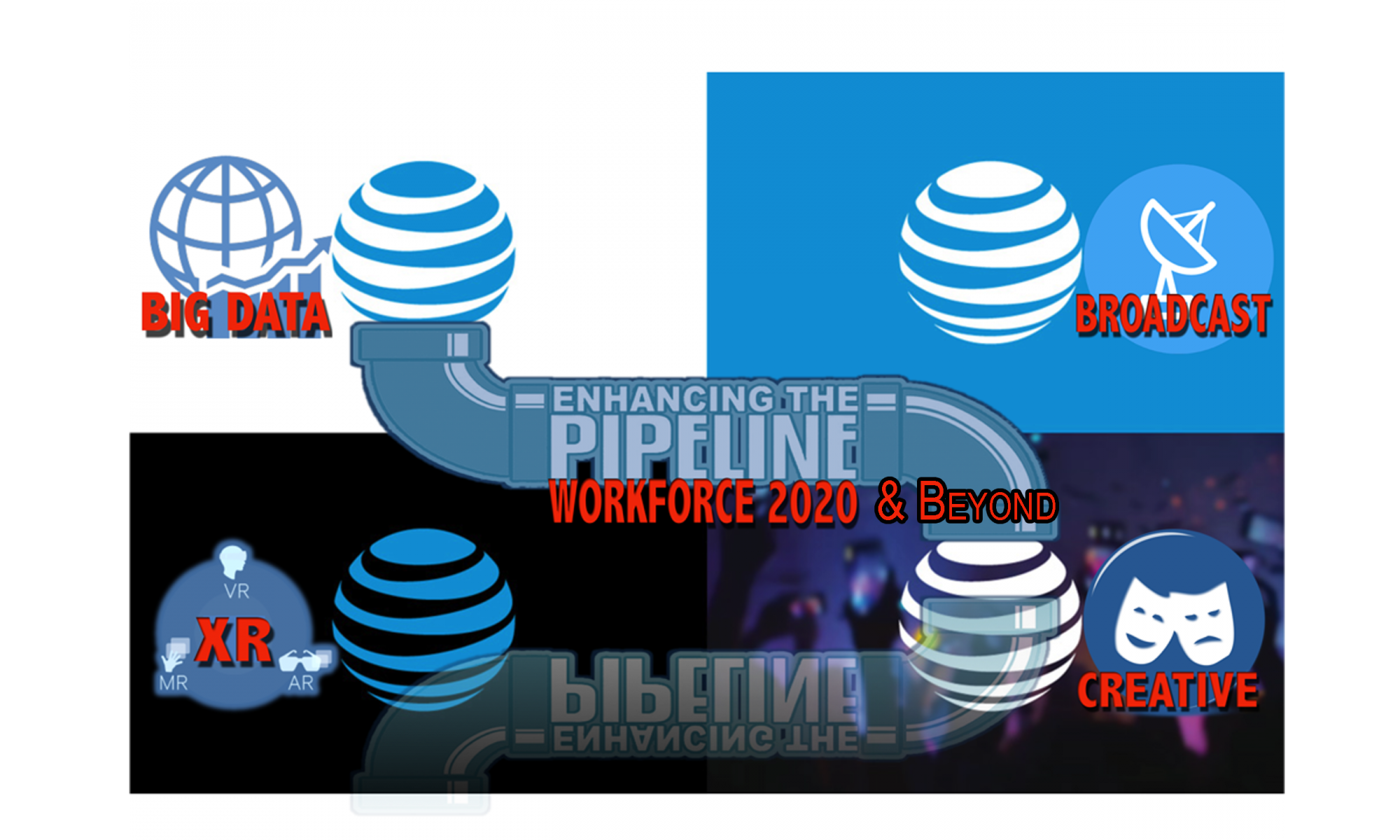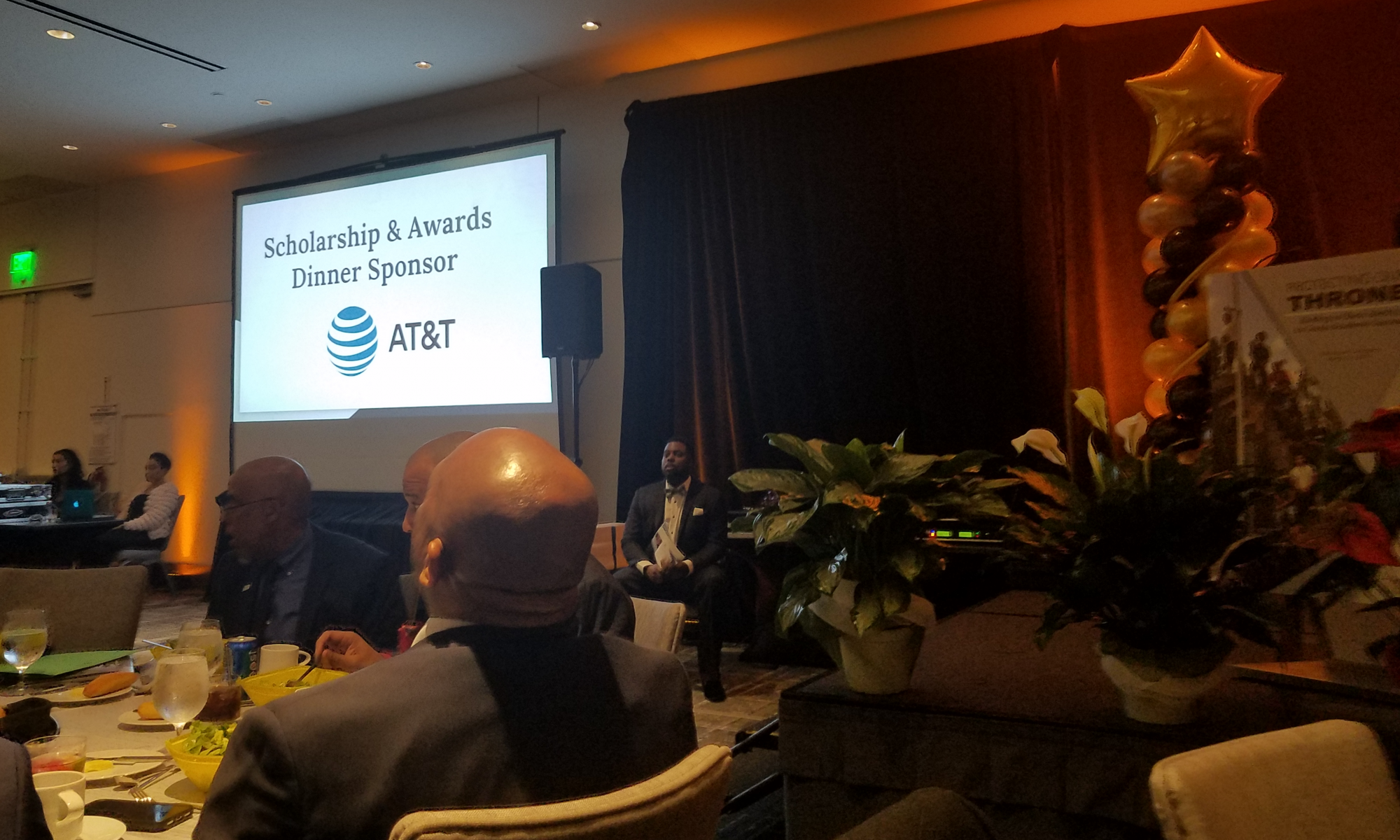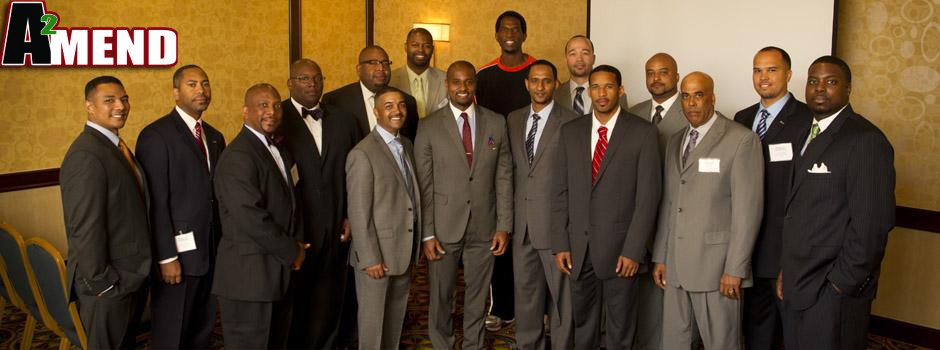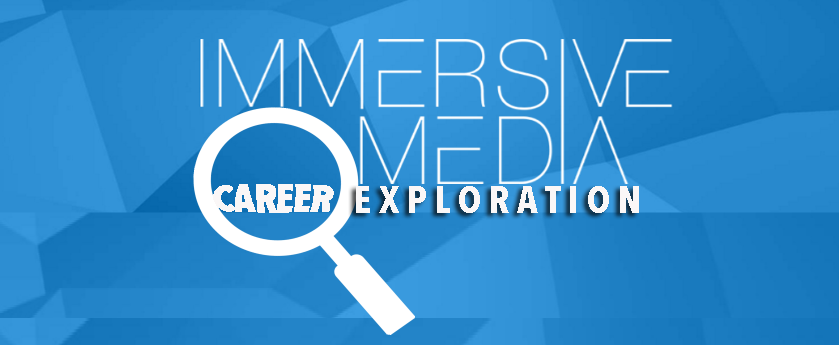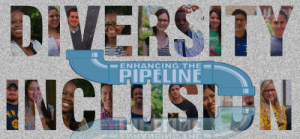BUILDING A SMART TALENT PIPELINE – HOW TO GET INVOLVED GUIDE FOR BUSINESSES SUPPORTING YOUNG CREATIVE DIGITAL MAKING THROUGH EMPLOYEE VOLUNTEERING.
DAKAR is an innovation 501(C) 3 Private Foundation with a mission to help young men and women of color connect with Corporations to bring great ideas to life. We are dedicated to supporting ideas that can help improve our 18-25-year-old underserved lives, with activities ranging from early–stage investment to in–depth research and practical programs.
DAKAR has been in existence since 1992, founded by Kevin and Barbara Clark. Our mission and Minimal Viable Product (MVP) is about building a tech/entertainment partnership with underserved public schools and community colleges in around Southern California, (Silicon Beach). The Tech Partnership is a growing network of employers creating the skills for the digital economy. We work to inspire young people about technology, accelerate the flow of talented people from all backgrounds into technology careers and help companies develop the technology skills they need for the future.
BUILDING THE SMART TALENT PIPELINE – DESIGN
This creative has been developed with seven years of research and volunteerism in the Compton, Inglewood, and Los Unified School District, SOCAL Community Colleges, and corporations corporate social responsibility programs backed by Diversity driven Employment Resource Groups (ERG) and other like-minded corporate strategies of digital making opportunities and corporate goodwill. It sets out the benefits for ERG’s to volunteer to support K-16 digital making. It draws on extensive research on the benefits of employees volunteering using the skills they use at work. It highlights the particular benefits for volunteering in the digital space in ways that bring together the altruistic and strategic intent of corporate volunteering.
This briefing is for AT&T’s Corporate Social Responsibility (CSR) and HR departments that work in or around technology, or employ staff in tech-related jobs, as they develop their strategies for corporate volunteering. This playbook serves as Dakar’s playbook for to get all sides connected to provides practical advice on setting up a Dakar Volunteering Pilot, entitled SMART PIPELINE
EMPLOYEE VOLUNTEERING AND DIGITAL MAKING – THE FACTS
- DAKAR has identified 2.3 Million students K-14, students who can be matched with ERG’S to meet the growing need for volunteerism and advocacy in the classrooms.
- The Creative Tech Economy, the Los Angeles County Arts Commission, the California Film Commission and IATSE provide this playbook with actionable intelligence and framework.
- Many Tech Entertainment like AT&T believes the digital skills gap has a direct negative impact on their corporation to stay competitive with global creation, distribution and consumption of content.
- Many employers in the Tech Entertainment sector say the public education the system isn’t meeting the standards and needs of future vis a vie- AT&T employment and Workforce 2025 in the Creative Tech Economy. Meeting the demand of digital natives in K-14 interest in making things using integrated digital technologies.
- Many believe digital making is a worthwhile activity, important for careers .enabled by employee volunteers.
- Face-to-face learning centers, whether they’re fab labs, maker spaces or innovation labs, K-14 inner city students have scarce venues to meet mentors and one another outside of the school classroom.
BUILDING THE SMART DIGITAL TALENT PIPELINE –NEEDS
The use of digital technologies is almost universal among US Corporations, and the Tech- Entertainment workforce is estimated to grow by 39 per cent by 2030, with 1.4 million digital professionals needed over the next five years. many tech firms believe the digital skills gap has a direct negative impact on their business and almost three-quarters of large tech firms identify skills gaps within their workforce. However, all industries employ tech staff and the digital skills gap is preventing growth in all sectors. As companies such at AT&T develop their business strategies for succeeding in the digital world, applying information and technology across the business to meet the needs of digitally connected customers, digital skills become even more important. There is a need for people who complement technical skills with business, leadership and communication skills.
FOR EXAMPLE
Digital and information services sector say the education system isn’t meeting the needs of Tech-Entertainment business. This has profound implications for developing existing employees, recruiting new employees, and inspiring the employees of the future.
STUDENTS FILLING THE SMART TALENT PIPELINE
The good news is that young people are enthusiastic to develop their digital skills. Direct contact with employers gives them further inspiration-motivating them to develop those skills and consider tech-related careers. These skills are best developed through a practical activity where young people create solutions to real problems (‘digital making’), rather than simply passively consuming digital products. A large percentage of K-6 students are know nothing other than digital and are interested in digital pedagogy as natives, as well as parents of these K-6 students, think a shift to an IOT Talent Platform is as important in the development of the young scholars and workforce of tomorrow.
Future, it will be these ‘digital makers’ who will make a creative contribution to the economy and an employer’s bottom line.
BUILDING THE SMART DIGITAL TALENT PIPELINE –THE CHALLENGE
There is a small but growing network of organizations offering opportunities for younger people to get involved with making things using digital technologies. Two-thirds of those organizations rely on volunteers, but they find it difficult to recruit the volunteers they need. Only by mobilizing expert volunteers from industry (to both inspire and teach) can we meet the rising
demand to develop young people’s skills in ways that motivate them to consider a career in the Creative Tech Economy in SOCAL
THE ERG BENEFITS OF EMPLOYEE- VOLUNTEERING
The business case for employer-supported volunteering is well established, with firms reporting that the practice boosts staff retention rates and morale, enables employees to develop new skill DAKAR generates new recruitment channels and enhances corporate reputation. Recent research indicates that this practice also enables employees to feel more comfortable in and connected to communities in which they work, and to develop empathy for people who are different from them.
BUILDING SMART PIPELINE VIA – MENTORING IN A DIGITAL AGE
Volunteering is increasingly seen as a cost-effective tool for creating healthy, motivated and engaged employees and delivering learning and development objectives, particularly where companies’ CSR and HR teams work together to integrate it into the core business. Some businesses, such as AT&T, APPLE, CISCO and INTEL feel that volunteering is so important they tie it into performance reviews, with the skills developed through volunteering explicitly mapped onto the company’s competency framework.
BUILDING THE DIGITAL TALENT PIPELINE – THE ERG BENEFITS
The business benefits of supporting young digital making through employee volunteering are where we’re going with ERG’s in our network. Their Corporate profile enhancement will be enhanced as well as measurable social impact and brand reputation in the realm of consumer engagement: understanding the post-millennial generation of future customers developing and motivating existing talent at different stages of their careers.
Recruiting and Inspiring new and future talent before going into these benefits in more detail, it is worth remembering that volunteering does carry an overhead cost for providers, particularly small organizations. So while it is a cost effective option for companies, it is not free, and some of the best partnerships include mechanisms where companies help cover this cost.
Before going into these benefits in more detail, it is worth remembering that volunteering does carry an overhead cost for providers, particularly small organizations. So while it is a cost effective option for companies, it is not free, and some of the best partnerships include mechanisms where companies help cover this cost.
BUILDING THE DIGITAL TALENT PIPELINE – SMART BUSINESS BENEFITS
The business benefits of supporting young digital making through employee volunteering Corporate profile enhancement: building visibility and brand reputation in the digital world. Raised company profile and reputation with customers and stakeholders, has been shown to have positive effects on brand value and reputation and bringing corporate values to life.
Supporting young people’s digital making sends a powerful message to customers as social good-impact. The partners and stakeholders for ERG volunteer/mentorship program will get a bounce in their social profile. It demonstrates that the company ‘walks the walk’; and that it understands how digital technology is reshaping the relationships between companies and customers, and that the skills of digital making help young people become effective customers.
Employee volunteers help communicate the company’s digital vision externally and demonstrate the positive association between the company’s brand, its digital vision and the needs of young people. For example, AT&T Aspire has very much influenced Dakar by AT&T strategic decision to support volunteer activities with a strong alignment with the company’s brand and culture.
Supporting young people’s digital making sends a powerful message to Corporation’s customers and demonstrates that the company ‘walks the walk’; and that it understands how digital technology is reshaping the relationships between companies and customers, and that the skills of digital making help young people become effective customers. employee volunteers help communicate the company’s digital vision externally and demonstrate the positive association between the company’s brand, its digital vision and the needs of young people. The formation of a pilot between organization such as Netflix will develop a use case to support volunteer activities with a strong alignment with the company’s brand and culture. Dakar believes Netflix customers will understand the workforce narrative to be a post-millennial generation initiative to hire America’s youth, especially Community Colleges. This will bind Netflix to future customers In the modern digital, where customer-facing processes integrate seamlessly with operational processes, all aspects of the business need to understand customers.
Dakar believes Netflix customers will understand the workforce narrative to be a post-millennial generation initiative to hire America’s youth, especially from within 18-25-Community Colleges. This will bind Netflix to future customers In the modern digital world, where customer-facing processes that will integrate seamlessly with changing technologies and new consumer experiences.
As the overall age profile of the workforce increases, the gap between companies and their future customers (the post-millennial generation born after the creation of the World Wide Web) risks widening. Supporting young people’s digital making helps develop a deep understanding of the business of the values, aspirations, and behaviors of these future customers in a way that impacts on employees’ day-to-day work.
DEVELOPING AND MOTIVATING EXISTING TALENT AT DIFFERENT STAGES IN THEIR DEVELOPMENT
Volunteering can increase productivity and reduce staff turnover1 as a result of increased employee engagement and improved morale, and even improve physical and emotional health for employees. For new staff, digital volunteering could offer a cost effective and low-risk way of providing the skills they will need to progress their careers, especially when compared with the cost of formal training programs. By working with young people to inspire them and develop their digital skills, they develop self-awareness, leadership, mentoring and team-working skills, and their ability to manage competing demands.
It also offers a powerful mechanism for engaging new employees in the company’s digital vision. For established employees, particularly technical staff whose roles are changing as technology becomes mainstream in the digital business, digital volunteering can support career transitions. Volunteers develop the communication and mentoring skills needed to work alongside non-technical staff.
They develop their creativity and adaptability by participating in activities using their existing technical expertise which takes them out of their comfort zone. It encourages reflection on one’s own career or life experiences. It can increase commitment to the company because it demonstrates the employer’s commitment.
For employees towards the end of their career, it offers a powerful mechanism for ensuring they remain engaged in the company’s digital vision and mission, feeling that they are inspiring the next generation. Where the company has entered into a strategic relationship with a provider this provides opportunities for internal networking and the shared reflection on experiences necessary to secure skill development–well-established staff can mentor new staff, increasing internal engagement and teamwork.
RECRUITING NEW TALENT
The competition to attract new talent is fierce. Socially aware, digitally literate Millennials bring with them a blend of technical and social skills. They seek greater fulfillment from work, are led by their values and look for an immediate connection between their actions and their impact. ERG volunteering programs in general appeal to these potential recruits. Programs that support young people’s digital making identify the company as one that recognizes the link between digital technology and social good, forming part of a strategy to become an ‘employer of choice’ for millennial , Generation Z
ERG volunteering programs in general appeal to these potential recruits. Programs that support young people’s digital making identify the company as one that recognizes the link between digital technology and social good, forming part of a strategy to become an ‘employer of choice’ for millennial , Generation Z, and Generation Alpha
Inspiring Future Talent The current digital talent pipeline is insufficient to meet most employers’ future needs.By supporting young people’s digital making, and demonstrating the careers that digital skills can lead to, companies can help grow the talent pool they will need for the future. Young people are inspired by role models, especially when they are able to engage directly with those role models in practical activity related to their interests and the volunteers’ work. Through digital making supported by credible volunteers, students develop their digital skills and the motivation to use those skills to participate in the world,
HOW TO GET INVOLVED’ GUIDE FOR BUSINESSES SUPPORTING YOUNG DIGITAL MAKING THROUGH EMPLOYEE VOLUNTEERING WHY NOW?
Today we have a unique opportunity to increase the number of people who begin and go on to forge,= lifelong skills in the digital making. Computing is not now a compulsory part of curriculum K-12.
Computing Science aka STEM is undergoing curriculum reform to build the subject of Computer Science into the Science and Technology area of learning in the curriculum and place Digital Competence as one of three core competencies across the curriculum, alongside Literacy and Numeracy. Familiar, loved brands from across the US have reinforced and built on the work being done in schools as part of the Tech For Hire initiative.
High profile campaigns such as the Hour of Code have raised awareness with parents and young people. Organizations like Code.org are on their way to becoming household names. For example, Coder Dojo has over 3,600 active clubs across the US offering digital skills to over 41,000 children, run by over 2,000 adult volunteers (plus teachers). And TEAL is an emerging campaign that is becoming a much talked about platform to integrate the Arts and Science
The digital skills gap is rising up the agenda as more companies move into growth. Now is the time to foster a generation with the skills and confidence to harness technology to participate in a digital workforce, tackle the social and environmental problems of the future, support the US thriving digital economy and foster new means of self-expression and community building. For companies supporting young digital making it can align Corporate Social Responsibility (CSR) efforts with investment in a future digital workforce. There are already some inspiring examples of tech businesses working with digital making provider organizations to provide volunteers, funding, space or equipment – such as Hart Beat University.
HOW TO GET INVOLVED’ GUIDE ISN’T THE NEW COMPUTING CURRICULUM ENOUGH? WHY NOT LEAVE IT TO SCHOOLS?
It’s tremendous progress to see computing as part of the STEaM initiatives, but this isn’t enough to foster a new generation of digital creators. Code.org has called for significantly more support to ensure schools are equipped to teach computing (through more teacher training, teacher support networks to exchange best practice, and providing teachers with better insights into the tech industry). In addition, even when in full-time education, young people only spend 18 per cent of their waking hours in school. That leaves a lot of time for learning outside the formal system. In the same way that we encourage kids to read books, as well as study English; or to play sport as well as take PE lessons; we believe that young people need access to engaging digital making experiences outside, as well as inside, the classroom. Think about the passions in your life when you were growing up. Informal learning is a critical component of an effective education. But only one in 60 young people who are interested in digital making are able to access opportunities to learn outside of school.
That leaves a lot of time for learning outside the formal system. In the same way that we encourage kids to read books, as well as study English; or to play sport as well as take PE lessons; we believe that young people need access to engaging digital making experiences outside, as well as inside, the classroom. Think about the passions in your life when you were growing up. Informal learning is a critical component of an effective education. But only one in 60 young people who are interested in digital making are able to access opportunities to learn outside of school.
HOW TO GET INVOLVED’ GUIDE OPPORTUNITIES AREN’T EVENLY SPREAD – GEOGRAPHICAL AND GENDER GAPS NEED FILLING
The high demand from parents and young people for digital making are consistent across the US – but this is not matched by the provision. With only minimal face-to-face learning places like Hart Beat were designed to offer young people outside of the school classroom, all areas have potential for growth – but Silicon Beach is ground zero.
Also, an action is needed to change the numbers of women working in the tech sector, which currently well below acceptable. More girls need to be made enthusiastic and confident about pursuing a tech career, and role models from industry are a great place to start.
TECH VOLUNTEERS INSPIRING A NEW GENERATION OF DIGITAL CREATORS
Young digital making is powered by volunteers. Two-thirds of the organizations offering digital making activities rely on volunteers. Volunteers from the corporate sector bring with them a set of experiences of how digital technology shapes our world and a passion for the application of technology and their line of work. Adult volunteers can also provide much needed positive
role models – building young people’s aspirations and confidence. However, national digital making organizations find it difficult to recruit the volunteers they need.
For example, Black Girls Codes operates as a para-education platform that has a waiting list looking for volunteers. Only by mobilizing expert volunteers from industry (as well as enthusiasts, interested amateurs, hobbyists and parents) can we meet the need. This could be volunteers from the typical tech industries, but all industries employ tech people who could be potential volunteers – for example, industries where digital creation is becoming increasingly important, such as design, fashion or music. This could be volunteers from the typical tech industries, but all industries employ tech people who could be potential volunteers – for example, industries where digital creation is becoming increasingly important, such as design, fashion or music.
For example, CoderDojo operates routinely, yet have many parents and young students on their waiting list for seats in their sessions. They’re constantly looking for volunteers. Only by mobilizing expert volunteers from industry (as well as enthusiasts, interested amateurs, hobbyists and parents) can we meet the need. This could be volunteers from the typical tech industries, but all industries employ tech people who could be potential volunteers – for example, industries where digital creation is becoming increasingly important, such as design, fashion or music.
HOW TO GET INVOLVED’ GUIDE-WHAT KINDS OF VOLUNTEERING OPPORTUNITIES ARE THERE?
There are opportunities for all to get involved, from experienced technical staff who’d be well suited to helping children write their first lines of code through to enthusiastic beginners who can learn alongside and facilitate others’ progress. Volunteers can provide mentorship and careers inspiration, or they can help with skills acquisition. Time committed can be as little as an hour or two and you can even play your part remotely via Zoom for example.
Staff in your organizations are well placed to help ensure that young people, inspired perhaps by organizations such as the Brotherhood Crusade are able to take the next steps on their digital skills journey. There are many different programs available locally and nationally – In Dakar’s next post, we’ll have a list of some programs that we hope to model our efforts to as they have demonstrated best practice and have wide geographical coverage.
THE SMART BUSINESS BENEFITS ANNEX
Marcelino Ford Levine, Intel
Ted Lai, Apple
Thomas Burnett, Cisco
Jay Tucker, USC, UCLA
Gregg Johnson, Los County Art Commission
Daryle Lockhart-Sci Fi Generation
Dan Watanabe, LA HI Tech
Rory Pullens, LAUSD ARTS
